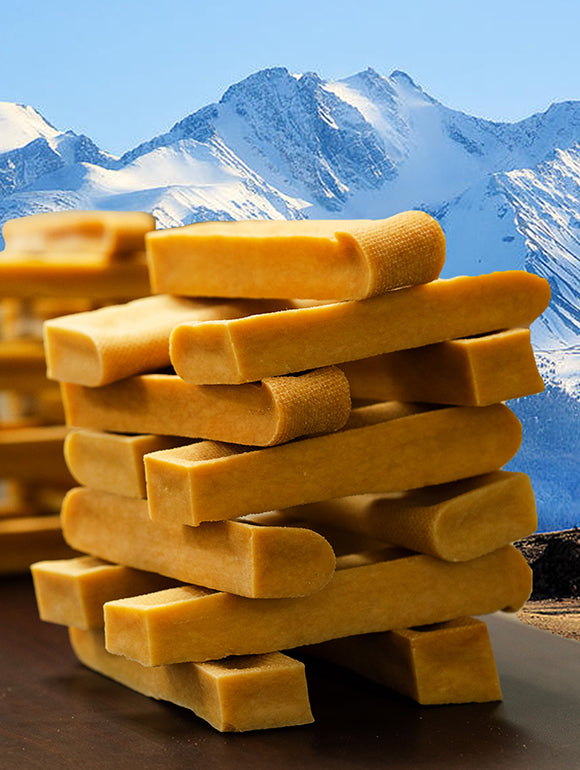Chew Article
Chhurpi: The Ancient Origins and Modern Journey
The Roots of Chhurpi
Chhurpi, with its rich lineage dating back thousands of years, is a symbol of resilience and innovation. In the challenging environment of Himalayan ranges where trade was limited and fertile land scarce, local inhabitants relied on animal husbandry. Dairy, as a result, became integral to Himalayan culture [1]. Cheese, as a culinary concept, started its evolutionary journey around 8000 years ago [2], with Chhurpi emerging as a unique and highly valued product in these remote areas thousands of years ago [1].
Crafting Chhurpi: From Milk to Cheese
The ancient process of crafting Chhurpi begins with milk from Naks (female yaks), cows, buffaloes, and the Chauris—a hybrid of yaks and hill cattle [3]. The milk is boiled, coagulated with agents like lemon juice or vinegar, and then transformed into substantial blocks. After pressing, these blocks are dried to develop a hard, slightly crumbly texture. True enthusiasts often age Chhurpi for several months or years to enhance its unique flavor.
Flavor Profile of Chhurpi
Narrating Chhurpi's flavor is like reciting an age-old Himalayan saga. It starts strong, with a tang of sourness, and as one chews on, it transforms: from a firm cube to a gum-like consistency, unveiling a smoky aroma [4]. The sensation is similar to that of a rock-hard bubble gum that slowly softens under the influence of time and saliva.
Cultural Significance
Chhurpi is more than a dairy product; it represents the heritage of the Himalayan people. It is a staple during celebrations, special occasions, and daily meals, reflecting the spirit and traditions of the Himalayas. Economically, it is vital for many residents, offering a reliable source of income and sustenance without the need for refrigeration.
Nutritional Benefits
Chhurpi is not just celebrated for its taste but also for its nutritional value. It is packed with protein, fat, calcium, phosphorus, and a significant amount of carbohydrates, earning it the nickname “energy tablet” among locals in the mountainous regions [5]. It also contains important vitamins like B6, B12, and folic acid, providing protection against diseases such as atherosclerosis [6]. Despite its richness in nutrients, Chhurpi remains low in fat and moisture [5, 7].
Chhurpi in America
The turn of the millennium brought Chhurpi to the US, but not in the way one might expect. It entered the market as a dog chew [8]. This transition provided American pets with a taste of a nutritious treat that has been a part of Himalayan life for millennia. Reflecting on this journey, it brings to mind a playful thought: it's somewhat bittersweet that our beloved pets had to wait thousands of years to enjoy this delicious and nutritious treat [1].
